Anna Laudan on her Love for Architectural Photography
Submitted by Andrea Bruchwitz / Benjamin Arntz
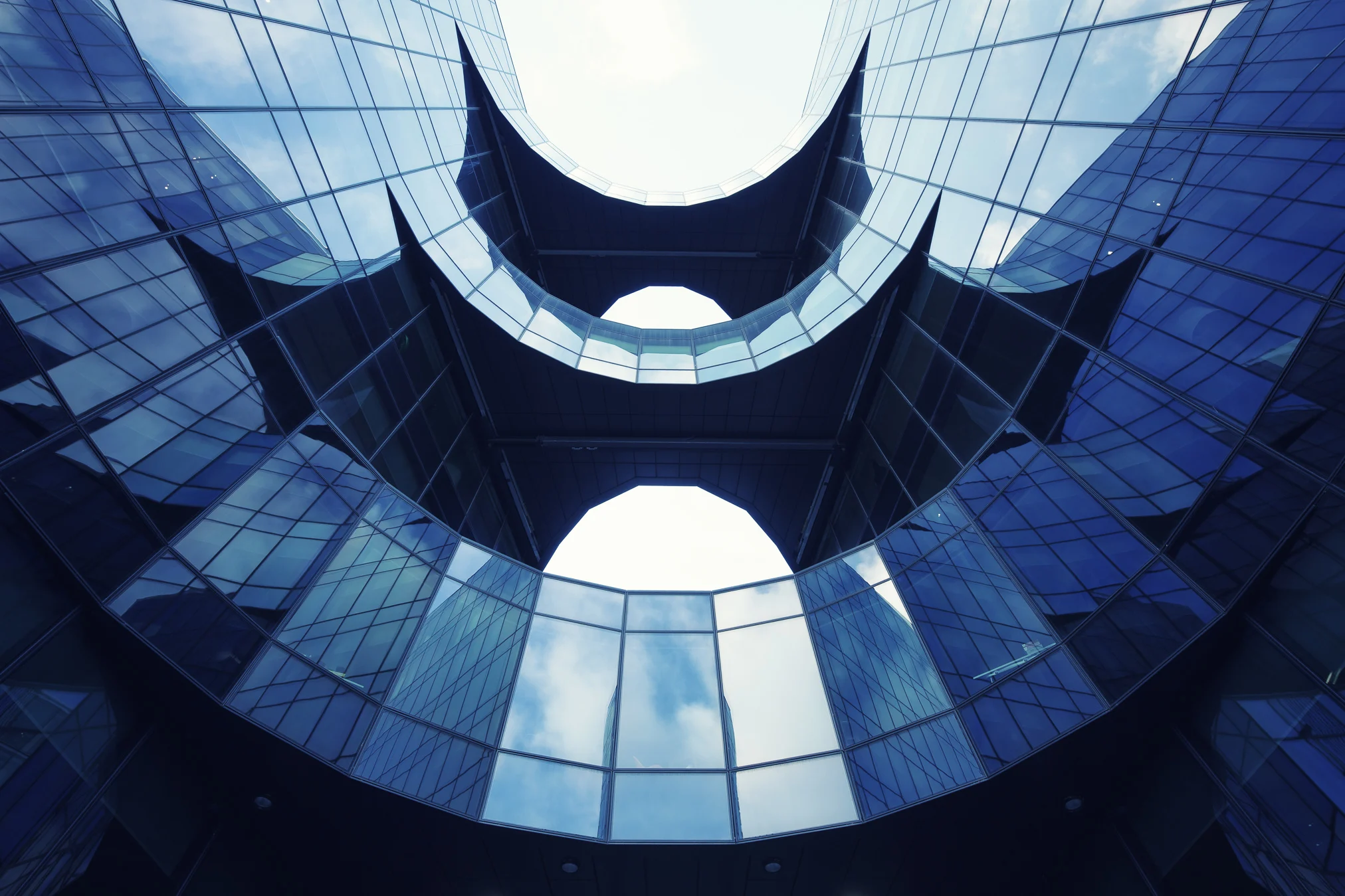
Builiding with mirror glass - © Anna Laudan | anna-laudan-photography.de.
Hamburg-based photographer Anna Laudan creates her own reality through artistically composed architecture photographs. Laudan has shown her work in numerous exhibitions and shared her expertise in the book Photoshop CC for Lightroom Users. Here, she speaks about her passion and shares her best architectural photography tips.
When did you first come in contact with photography?
I first discovered artistic photography in high school. Back then, I was using my grandfather’s analog camera and developing the pictures in a dark room. A few years ago, I came across the work of Dutch photographer Joel Tjintjelaar, and that’s how I discovered my love for architectural photography.
Why do you focus on the genre of architectural photography?
I can let my artistic inclinations run wild while enjoying the peace and quiet. I do also photograph landscapes and people, however the clarity and structure of architecture fascinates me. In my job, I’m always dealing with people. Since I turn to photography for balance, I can’t imagine putting people at the center of my photography.
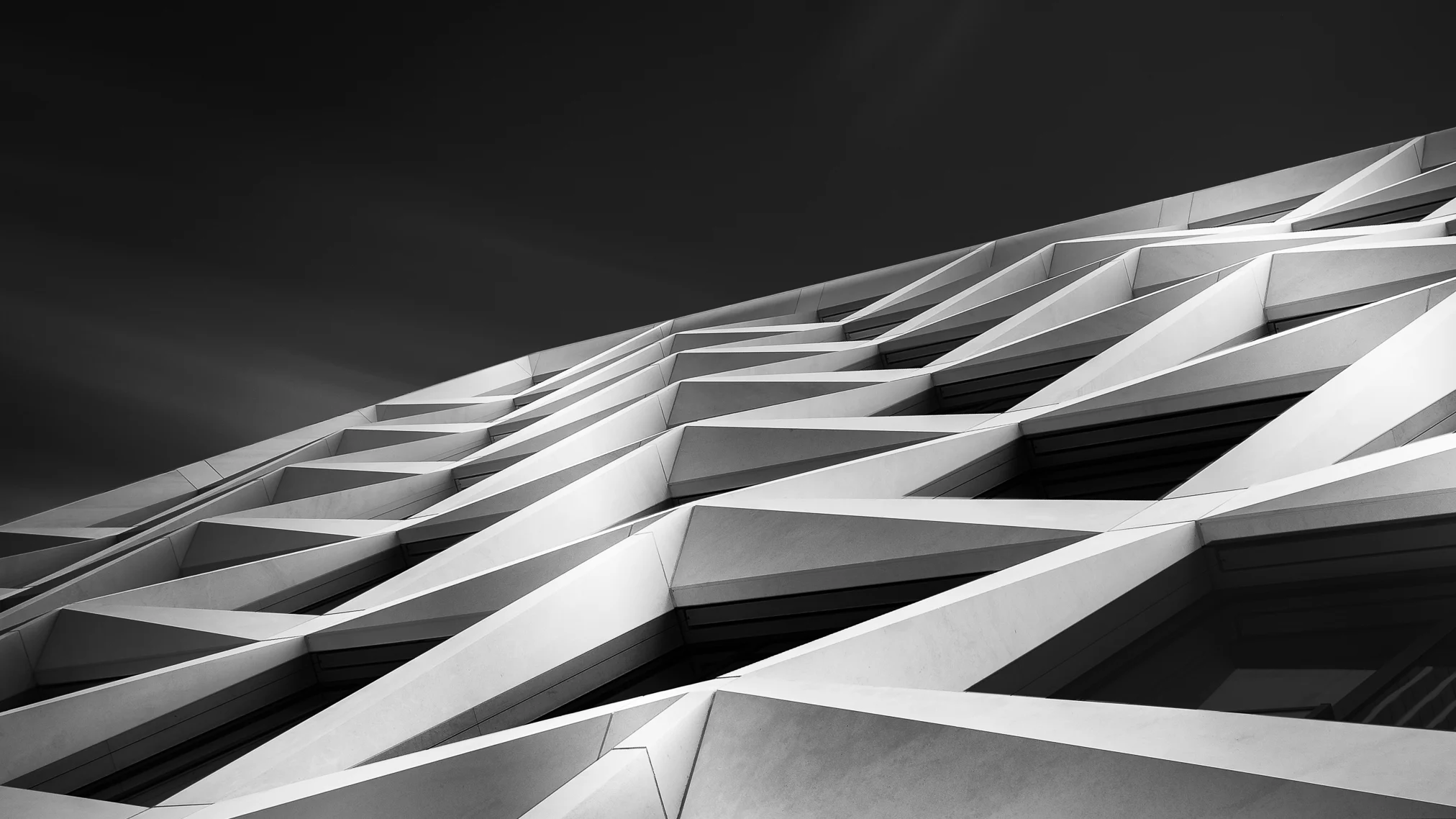
Building facade - © Anna Laudan | anna-laudan-photography.de.
What sets good architectural photography apart?
There is not just one kind of great architectural photography. I like different styles. I find it impressive when a photograph develops its own vision of the building and illustrates that through emphasis or reduction of its structures. My architecture pictures also have a high degree of abstraction. I predominantly stick to black and white in order to make this effect even stronger.
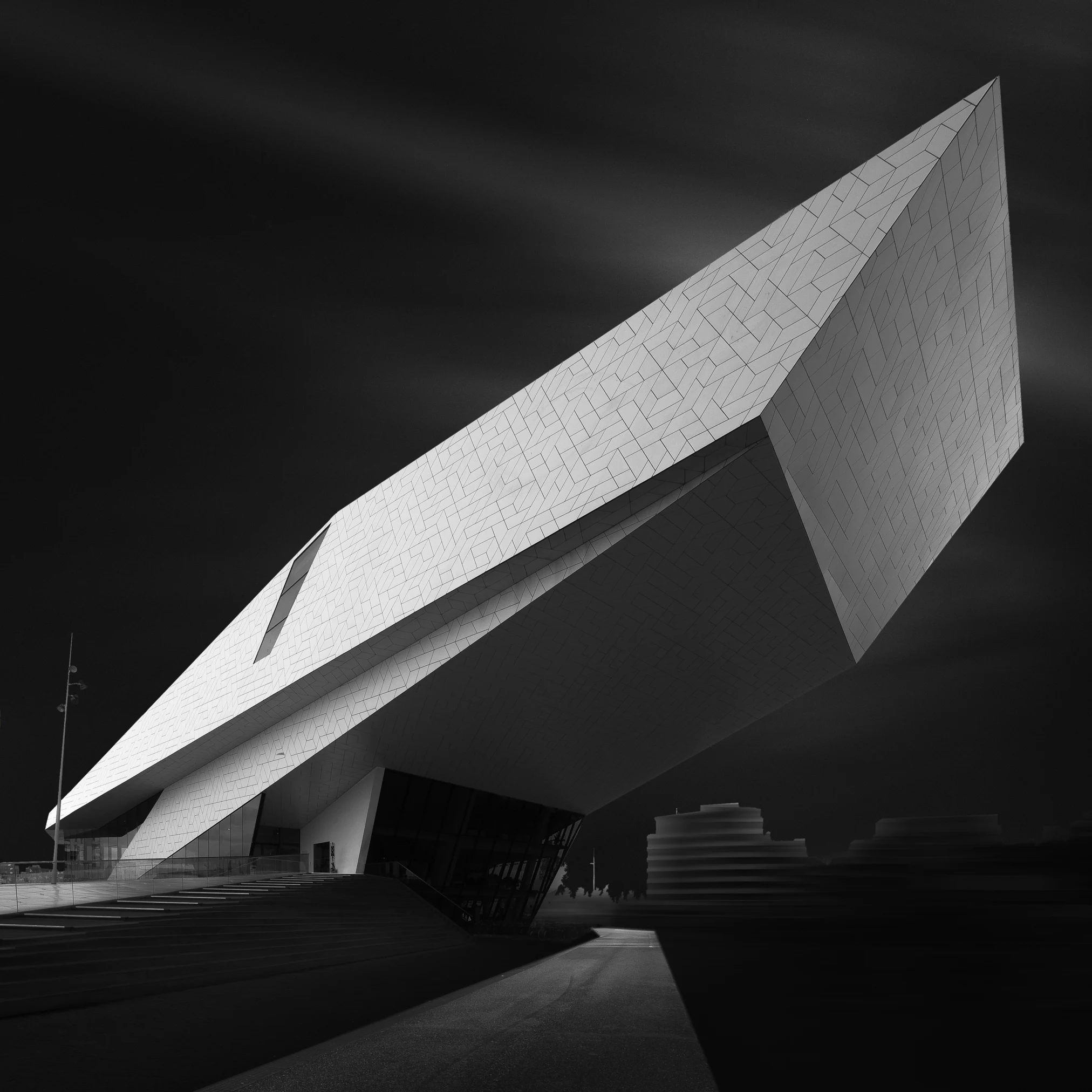
Abstract building in black and white - © Anna Laudan | anna-laudan-photography.de.
You once said you paint with light and shadow – what are your thoughts on digital manipulation?
Joel Tjintjelaar hit the nail on the head when he said: “First you take the photograph, then you create it. The act of creating should have no limits.” The captured image is merely my jumping off point – like a canvas to a painter. I am not trying to create an exact reproduction of reality at all, but rather my own reality. For this, I change distracting elements or let them disappear into blur or darkness. I like to photograph buildings when it is overcast in order to have more freedom with the lighting in post.
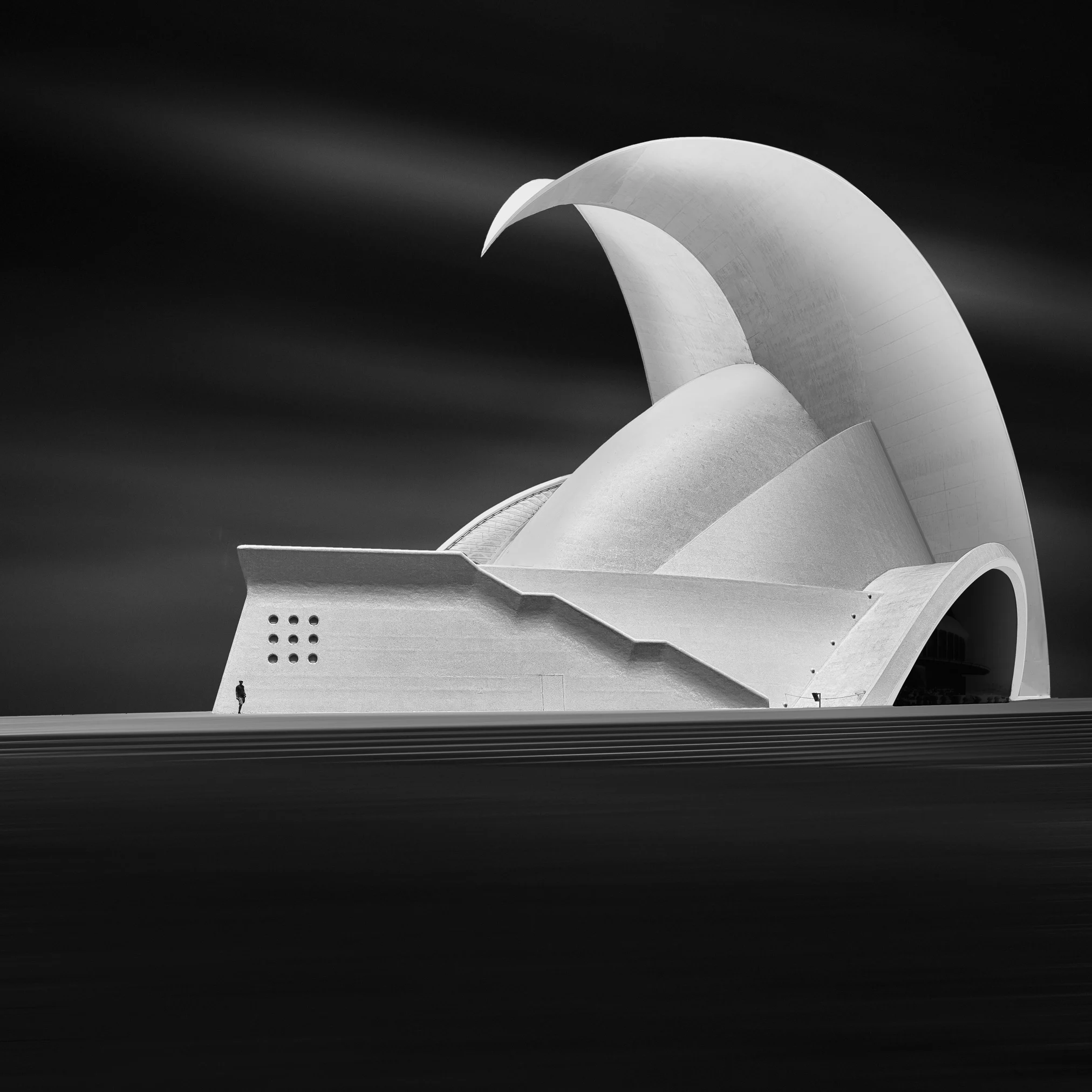
Abstract building in black and white - © Anna Laudan | anna-laudan-photography.de.
What can you tell our readers about … … selecting the right lens for architectural photography?
You should use a wide-angle lens, ideally a tilt-shift lens such as the Canon T-S 17mm. However, this is really only necessary if you are entirely dedicated to architectural photography, because it is really expensive.
… aperture settings and depth of field in architectural photography?
I usually photography with a mid to high aperture and prefer when the whole image is crisp.
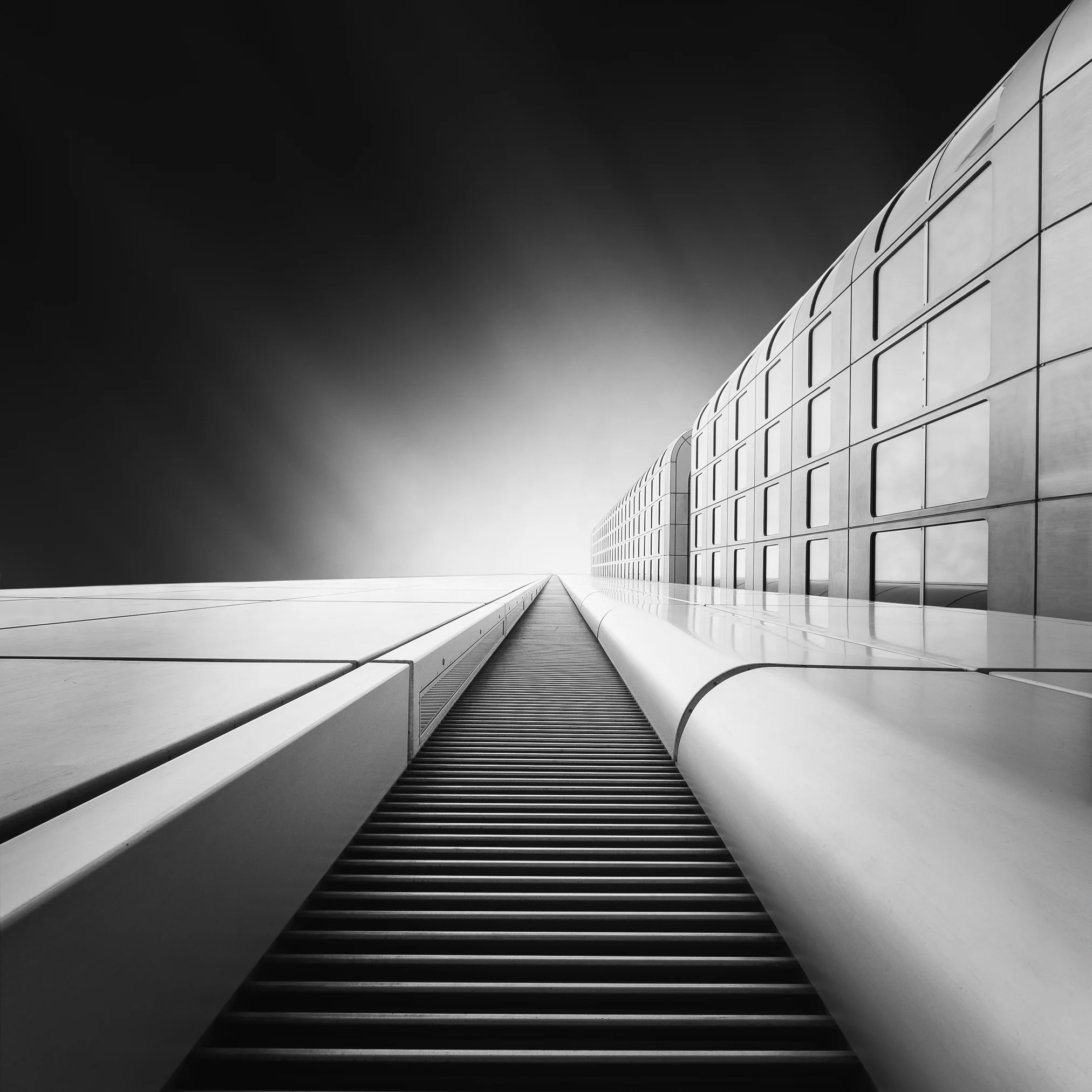
Futuristic building in black and white - © Anna Laudan | anna-laudan-photography.de.
… shutter speeds for architectural photography?
Fast exposures and long exposures of many seconds – or even minutes – are both possible. It all depends on what effect you want to create. For my pictures, I prefer long exposures in order to make movement visible and take the abstraction up a notch.
… digital post-processing for architectural photography?
Whenever possible, you should shoot in RAW format and not leave the post-processing up to the camera. Of course, laborious editing in Photoshop isn’t always necessary. This is often the case for me. Often, simple editing in Lightroom is sufficient.
… being prepared – what do you bring to photograph buildings?
I shoot with a Canon EOS 6D. I mostly use a wide-angle lens, the EF 16-35mm f/4 L from Canon. For a while, I’ve also been bringing a T-S 17mm f/4 L, also made by Canon. When I set out, I bring a tripod, a remote shutter release, and various gray filters.
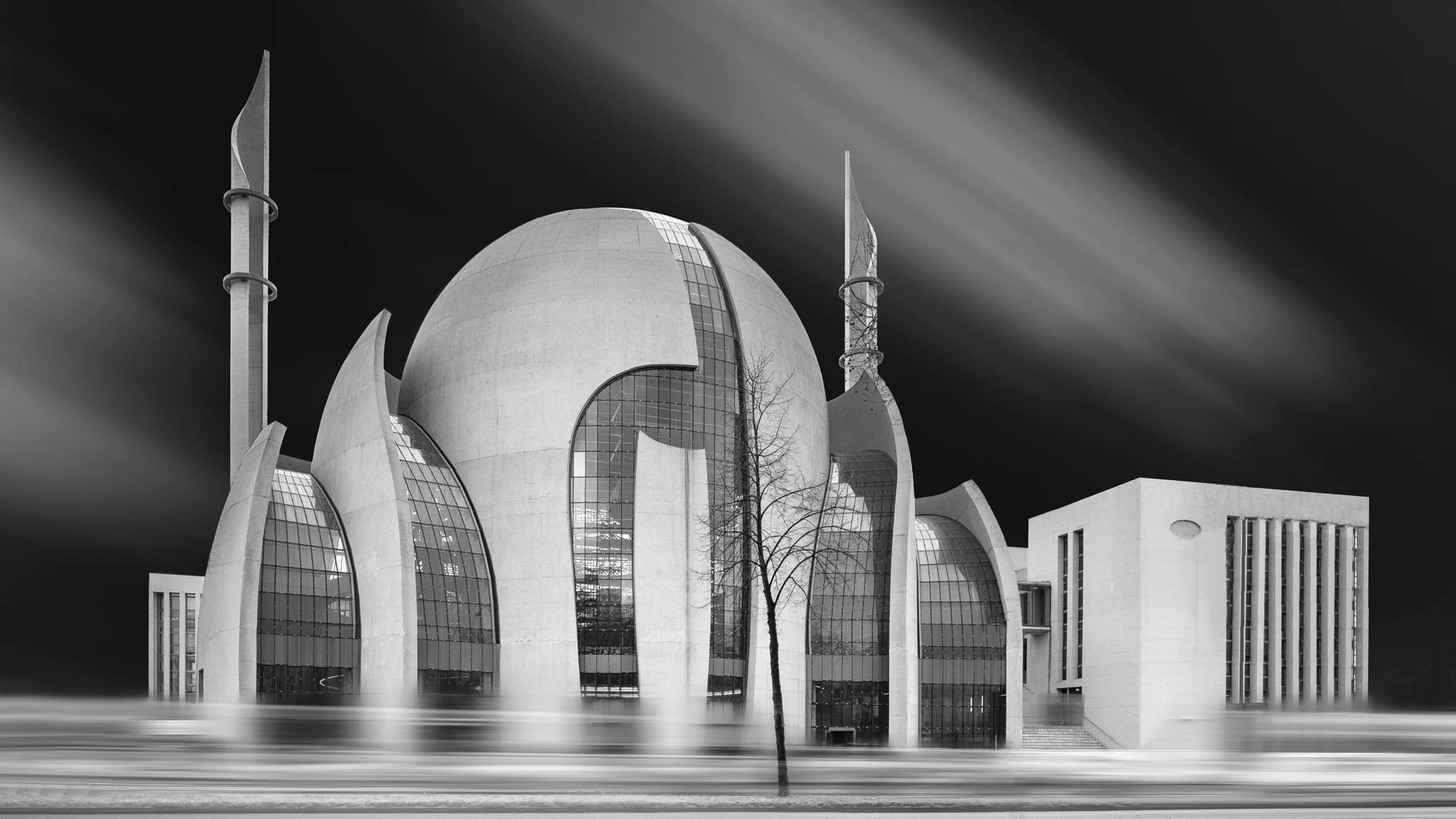
Mosque in black and white - © Anna Laudan | anna-laudan-photography.de.
Which WhiteWall mounting do you prefer for your large-format, monochrome pieces?
For large-format photographs, I prefer the Acrylic Photo Prints, especially the Matte Acrylic Photo Print. That way, there is no distracting glare and it gives the piece a subtle appearance of depth.
There are some famous photographers in the history of architectural photography. Who is your favorite?
In the realm of analog photography, Andreas Feininger is one of my absolute favorites. Joel Tjintjelaar has especially inspired me. There are also less-famous photographers whose work I admire.




